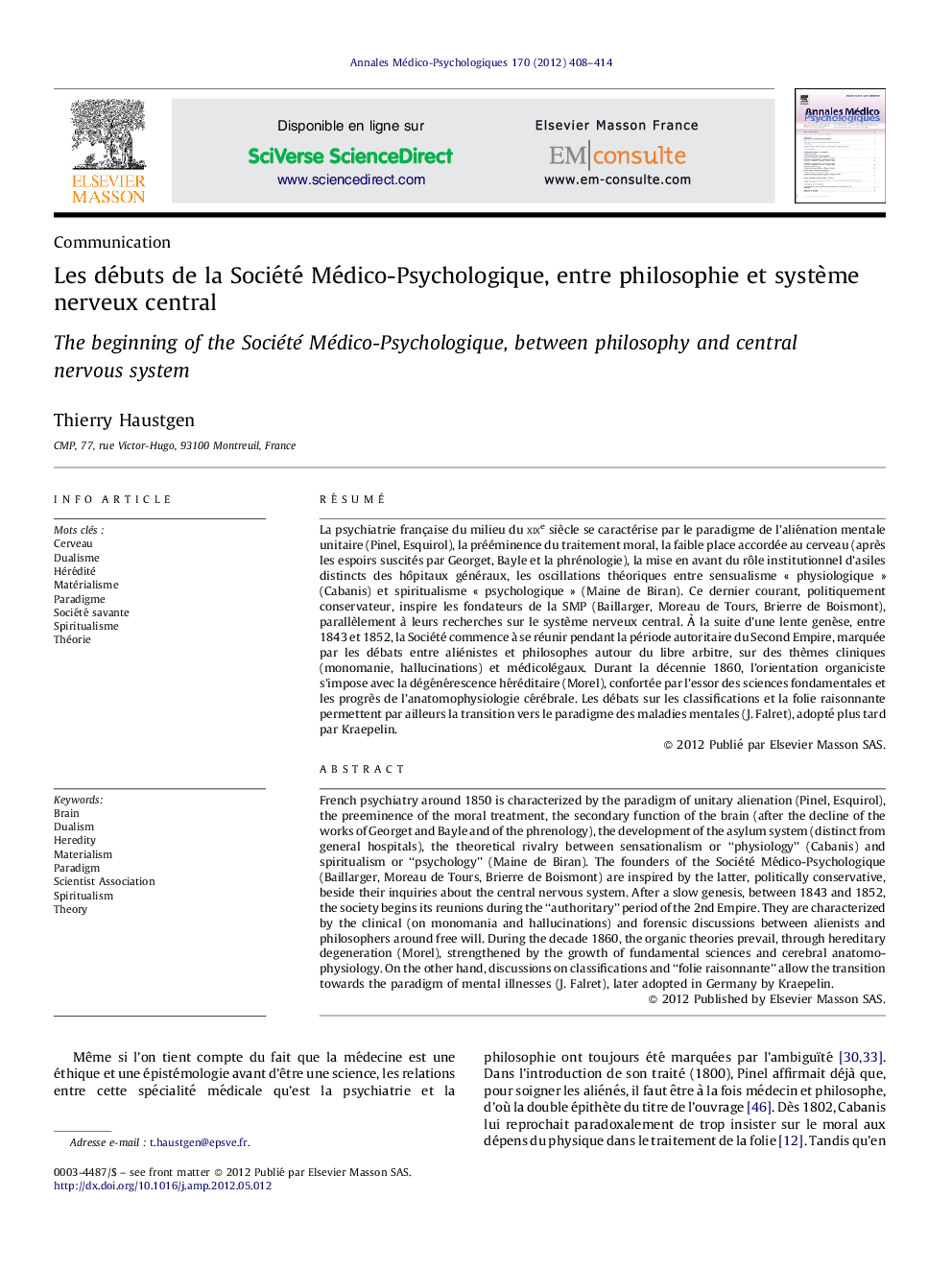| کد مقاله | کد نشریه | سال انتشار | مقاله انگلیسی | نسخه تمام متن |
|---|---|---|---|---|
| 313480 | 534495 | 2012 | 7 صفحه PDF | دانلود رایگان |

RésuméLa psychiatrie française du milieu du xixe siècle se caractérise par le paradigme de l’aliénation mentale unitaire (Pinel, Esquirol), la prééminence du traitement moral, la faible place accordée au cerveau (après les espoirs suscités par Georget, Bayle et la phrénologie), la mise en avant du rôle institutionnel d’asiles distincts des hôpitaux généraux, les oscillations théoriques entre sensualisme « physiologique » (Cabanis) et spiritualisme « psychologique » (Maine de Biran). Ce dernier courant, politiquement conservateur, inspire les fondateurs de la SMP (Baillarger, Moreau de Tours, Brierre de Boismont), parallèlement à leurs recherches sur le système nerveux central. À la suite d’une lente genèse, entre 1843 et 1852, la Société commence à se réunir pendant la période autoritaire du Second Empire, marquée par les débats entre aliénistes et philosophes autour du libre arbitre, sur des thèmes cliniques (monomanie, hallucinations) et médicolégaux. Durant la décennie 1860, l’orientation organiciste s’impose avec la dégénérescence héréditaire (Morel), confortée par l’essor des sciences fondamentales et les progrès de l’anatomophysiologie cérébrale. Les débats sur les classifications et la folie raisonnante permettent par ailleurs la transition vers le paradigme des maladies mentales (J. Falret), adopté plus tard par Kraepelin.
French psychiatry around 1850 is characterized by the paradigm of unitary alienation (Pinel, Esquirol), the preeminence of the moral treatment, the secondary function of the brain (after the decline of the works of Georget and Bayle and of the phrenology), the development of the asylum system (distinct from general hospitals), the theoretical rivalry between sensationalism or “physiology” (Cabanis) and spiritualism or “psychology” (Maine de Biran). The founders of the Société Médico-Psychologique (Baillarger, Moreau de Tours, Brierre de Boismont) are inspired by the latter, politically conservative, beside their inquiries about the central nervous system. After a slow genesis, between 1843 and 1852, the society begins its reunions during the “authoritary” period of the 2nd Empire. They are characterized by the clinical (on monomania and hallucinations) and forensic discussions between alienists and philosophers around free will. During the decade 1860, the organic theories prevail, through hereditary degeneration (Morel), strengthened by the growth of fundamental sciences and cerebral anatomo-physiology. On the other hand, discussions on classifications and “folie raisonnante” allow the transition towards the paradigm of mental illnesses (J. Falret), later adopted in Germany by Kraepelin.
Journal: Annales Médico-psychologiques, revue psychiatrique - Volume 170, Issue 6, August 2012, Pages 408–414